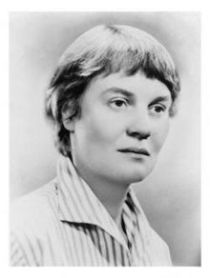My education has been profoundly influenced by the use of digital tools and approaches. In terms of digital approaches to education, online courses stand out to me the most in my own personal experience. I have taken two online courses thus far during my time at Guelph: The Practicing Historian and Canadian Government and Politics. These courses offered many opportunities in terms of digital approaches to teaching, research, and assignments. One example of a unique digital approach was an assignment in my Practicing Historian class which involved examining primary source materials which were uploaded to the courselink page and writing a paper based on these materials. This assignment would have been unthinkable with the resources available for usage in history programs only two decades previous. I feel as though, in this instance, digital tools and approaches truly benefited my class as we were able to engage collectively with primary source material we might not otherwise have had access to in a way which encouraged creative thought and interpretation and undoubtedly produced a diverse array of results. This being said, I feel as though there are some potential downfalls to digital approaches to education such as online courses. Firstly, I found some material, especially readings, difficult to focus on. The reason for this is that I am, at least to some extent, an auditory learner. Lectures, in my own experience, have better enabled me to remember information and engage more effectively in course material. The reason I stated that there are some potential downfalls in digital approaches to education is because there are many ways with the digital tools available to most students to engage students with a variety of learning styles. Including video clips, photos, and other resources. Using courselink and integrating a wide array of materials offers an effective alternative to text sources which can engage a wider variety of students.
In terms of digital tools, there seems to be no doubt amongst students that internet resources have entirely revolutionized the research process and most other aspects of academics. In some ways, digital tools are enormously beneficial. Materials which would have taken hours to seek out in an archive or library can now, in most cases, be accessed within a few minutes. Databases have given students access to the latest innovative scholarship in most fields of study. This being said, there are problems with digital tools which I have experienced myself as a history student. In William J. Turkel’s blog post “Going Digital” the author describes the central problem in the past in terms of research being scarcity. (Turkel 2011) Certainly, as a student today, I can comfortably say that this problem no longer exists. However, Turkel goes on to say that today the central problem to research is, ironically, abundance. (Turkel 2011) In an essay I wrote in the Fall 2012 semester, I did some extensive research involving newspaper articles. The problem I had, was that no matter how much time I devoted to my research, it was not possible for me to say I had conducted an in depth examination of newspaper articles from the period: There were simply too many. Though digital tools might have created this abundance, they are also, in part, the solution. I tried some of Turkel’s recommendations in terms of research and I believe that they will come in handy in terms of finding connections in my research. Additionally, they will be helpful in narrowing the variety of sources I will be viewing to those most relevant to my topic. Even the process of composing essays is made easier by digital tools. In the 2012 Winter Semester, I downloaded Zotero and was very impressed by the range of useful functions the program has and the ease with which bibliographies could be generated. Though there are some potential problems, digital tools have been critically important to my own work as a history student and will, no doubt, continue to be in the future.
In terms of the future possibilities of digital approaches and tools to education, I am hesitant to predict or speculate, however, there are a few trends that have been occurring and will continue to occur. In Susan Hockey’s work “The History of Humanities: Computing” in the book A Companion to Digital Humanities, Hockey describes a process of consolidation which occurred as scholars interested in digital humanities made contact and set collective goals on the topic.(Hockey 2004) I believe that consolidation will continue in all facets of the digital humanities. Not only do I think that collaboration in terms of digital humanities projects will allow efforts to be streamlined, but I also think that digital tools themselves will continue to undergo a process of consolidation. An example that I have experienced is the collaboration between the University of Guelph, the University of Waterloo, and Wilfrid Laurier University to expand the materials accessible to students. There are still problems that I believe will continue to characterize the future of digital tools and approaches in education. Though William J. Turkel states that there have historically been financial obstacles to the access of archives, libraries, and other resources, these obstacles still exist. (Turkel 2011) Many journals require expensive subscriptions and are virtually inaccessible to the public. Access to information and intellectual property have been and will continue to be issues in terms of digital tools such as journals and databases.
Works Cited
Hockey, Susan. The History of Humanities Computing. A Companion to Digital Humanities. Edited by Susan Schreibman, Ray Siemens, and John Unsworth. Malden: Blackwell Publishing, 2004. 8.
Turkel, William J. “Going Digital.” William J. Turkel (blog), March 15, 2011. http://williamjturkel.net/2011/03/15/going-digital/ (accessed January 10, 2013).


